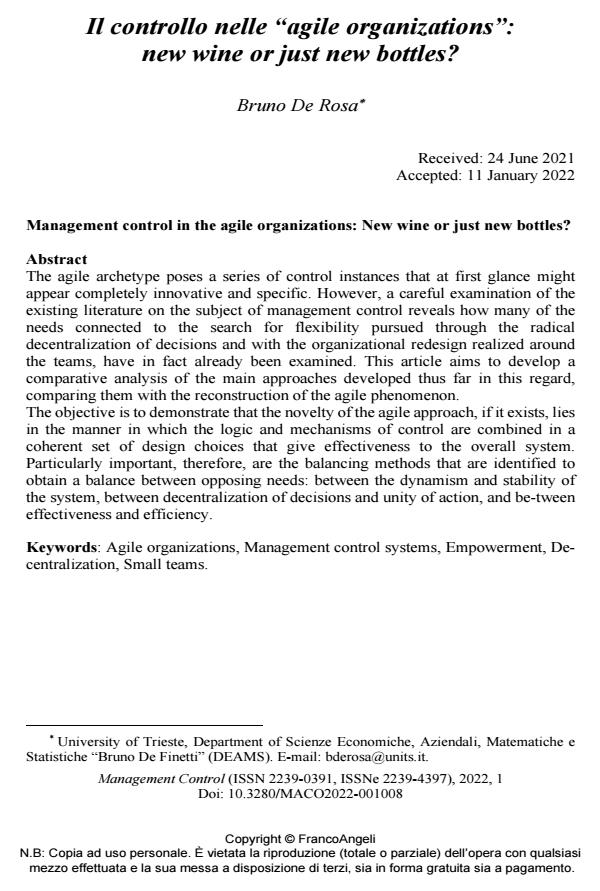Il controllo nelle "agile organizations": new wine or just new bottles?
Titolo Rivista MANAGEMENT CONTROL
Autori/Curatori Bruno De Rosa
Anno di pubblicazione 2022 Fascicolo 2022/1
Lingua Italiano Numero pagine 28 P. 121-148 Dimensione file 1158 KB
DOI 10.3280/MACO2022-001008
Il DOI è il codice a barre della proprietà intellettuale: per saperne di più
clicca qui
Qui sotto puoi vedere in anteprima la prima pagina di questo articolo.
Se questo articolo ti interessa, lo puoi acquistare (e scaricare in formato pdf) seguendo le facili indicazioni per acquistare il download credit. Acquista Download Credits per scaricare questo Articolo in formato PDF

FrancoAngeli è membro della Publishers International Linking Association, Inc (PILA)associazione indipendente e non profit per facilitare (attraverso i servizi tecnologici implementati da CrossRef.org) l’accesso degli studiosi ai contenuti digitali nelle pubblicazioni professionali e scientifiche
The agile archetype poses a series of control instances that at first glance might appear completely innovative and specific. However, a careful examination of the existing literature on the subject of management control reveals how many of the needs connected to the search for flexibility pursued through the radical decentralization of decisions and with the organizational redesign realized around the teams, have in fact already been examined. This article aims to develop a comparative analysis of the main approaches developed thus far in this regard, comparing them with the reconstruction of the agile phenomenon. The objective is to demonstrate that the novelty of the agile approach, if it exists, lies in the manner in which the logic and mechanisms of control are combined in a coherent set of design choices that give effectiveness to the overall system. Particularly important, therefore, are the balancing methods that are identified to obtain a balance between opposing needs: between the dynamism and stability of the system, between decentralization of decisions and unity of action, and be-tween effectiveness and efficiency.
Parole chiave:Agile organizations, Management control systems, Empowerment, Decentralization, Small teams.
Bruno De Rosa, Il controllo nelle "agile organizations": new wine or just new bottles? in "MANAGEMENT CONTROL" 1/2022, pp 121-148, DOI: 10.3280/MACO2022-001008